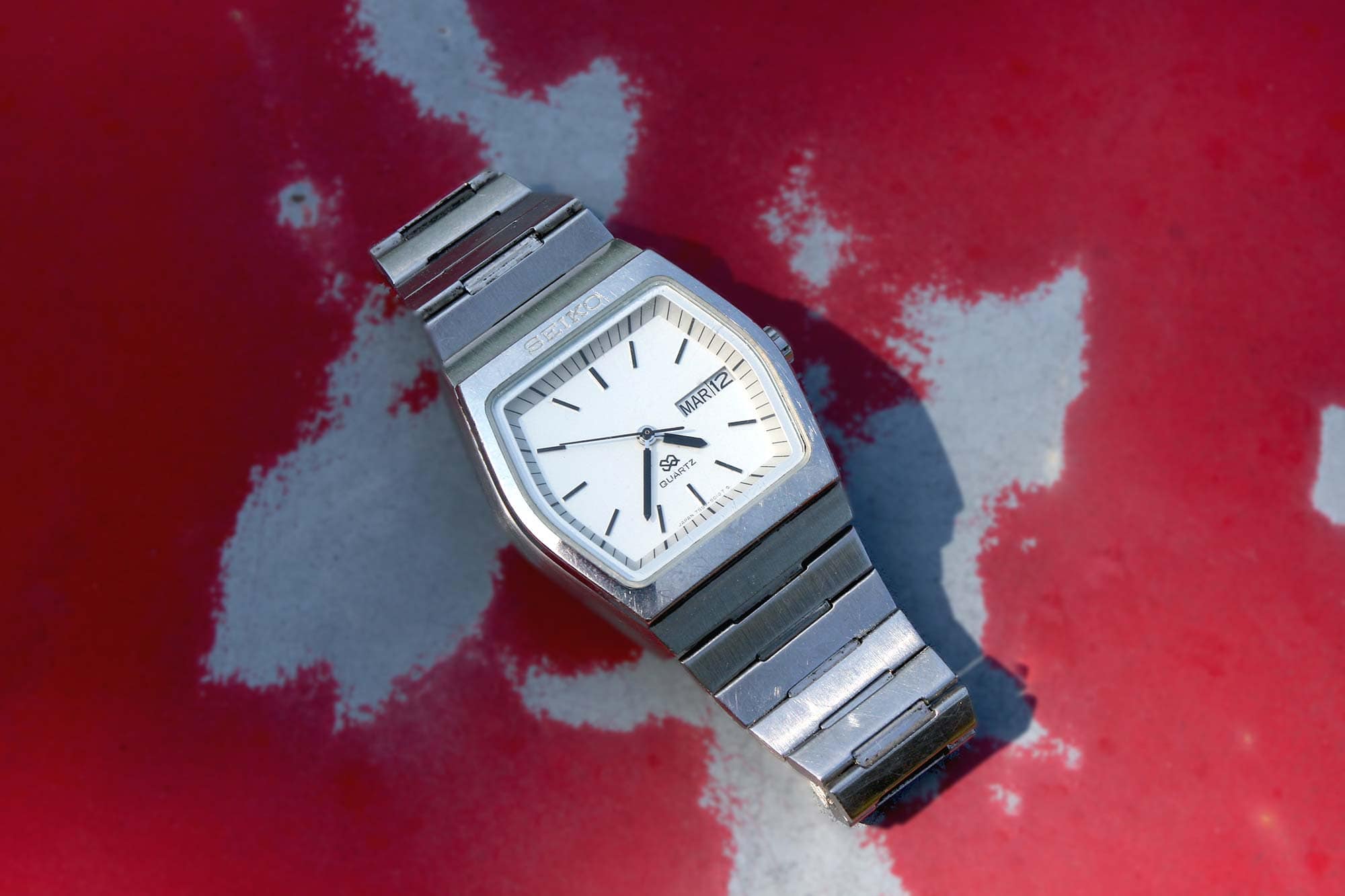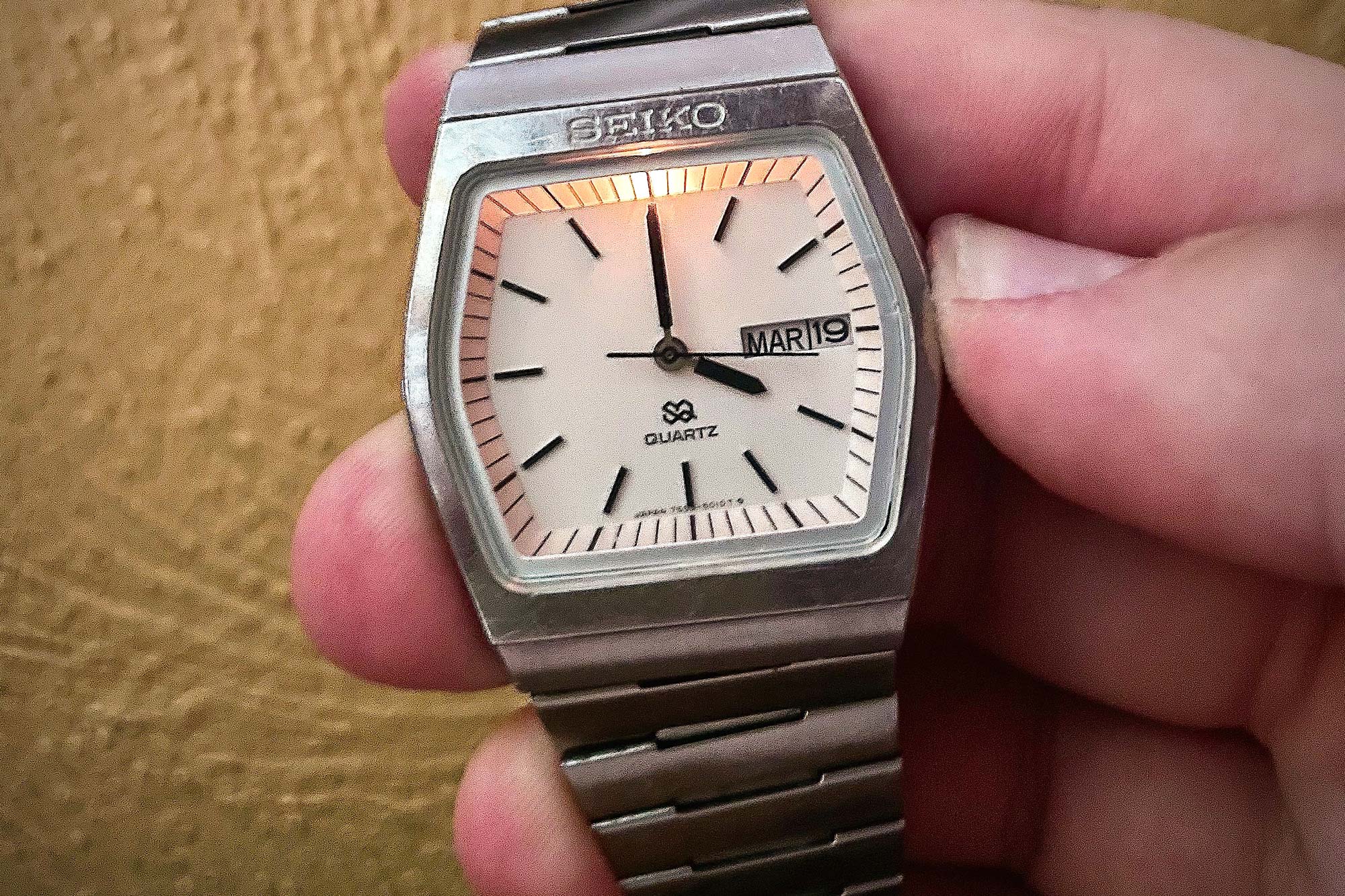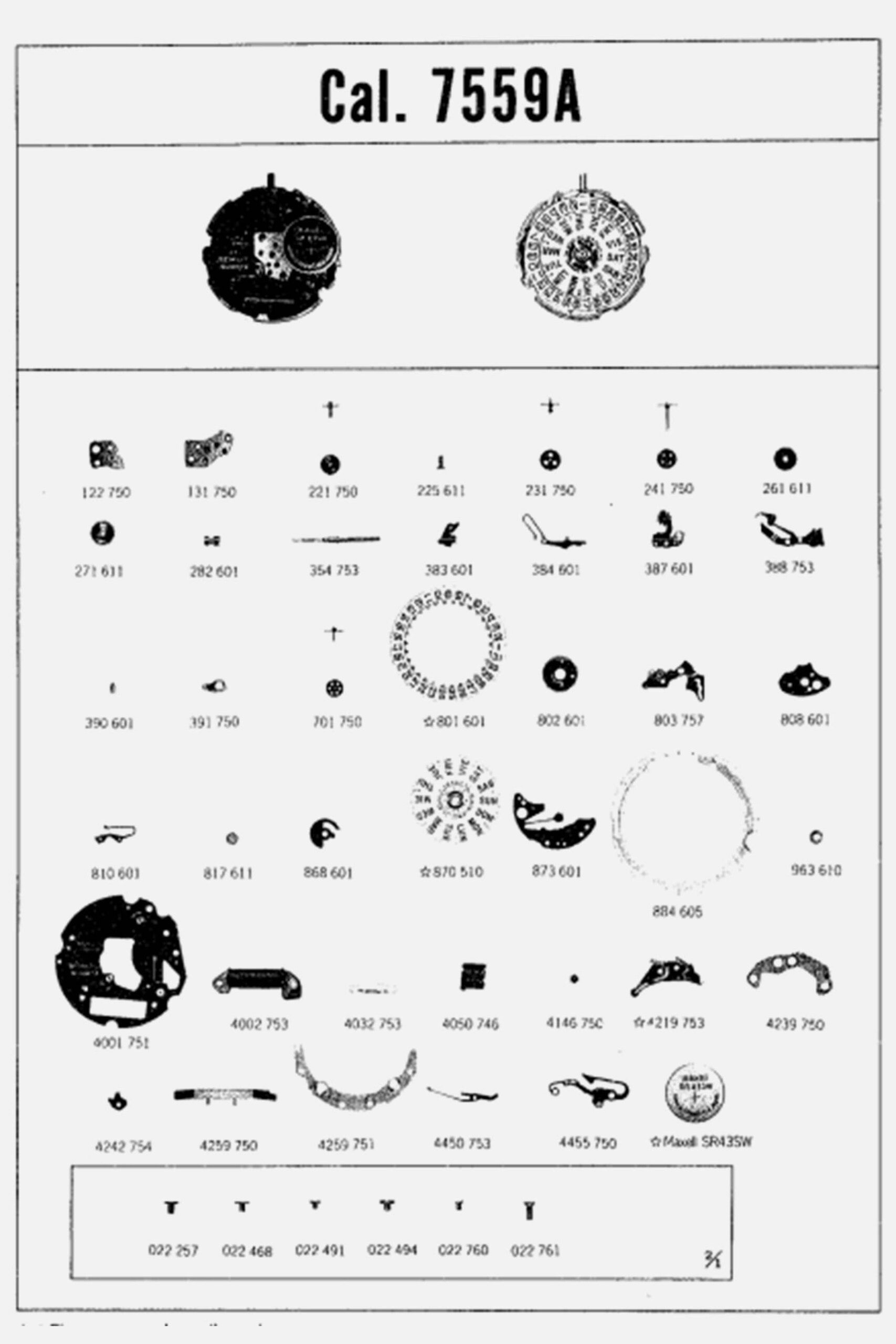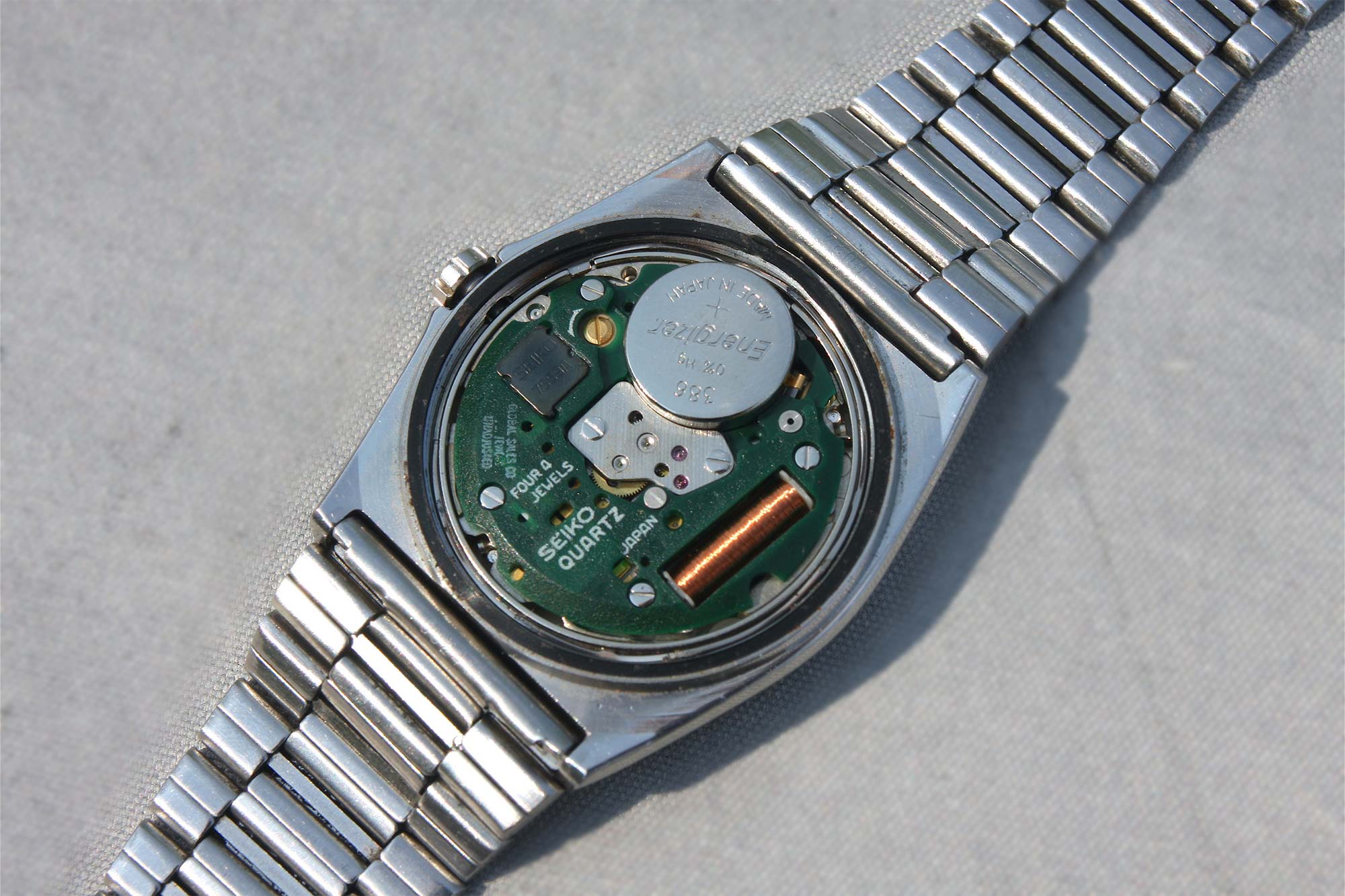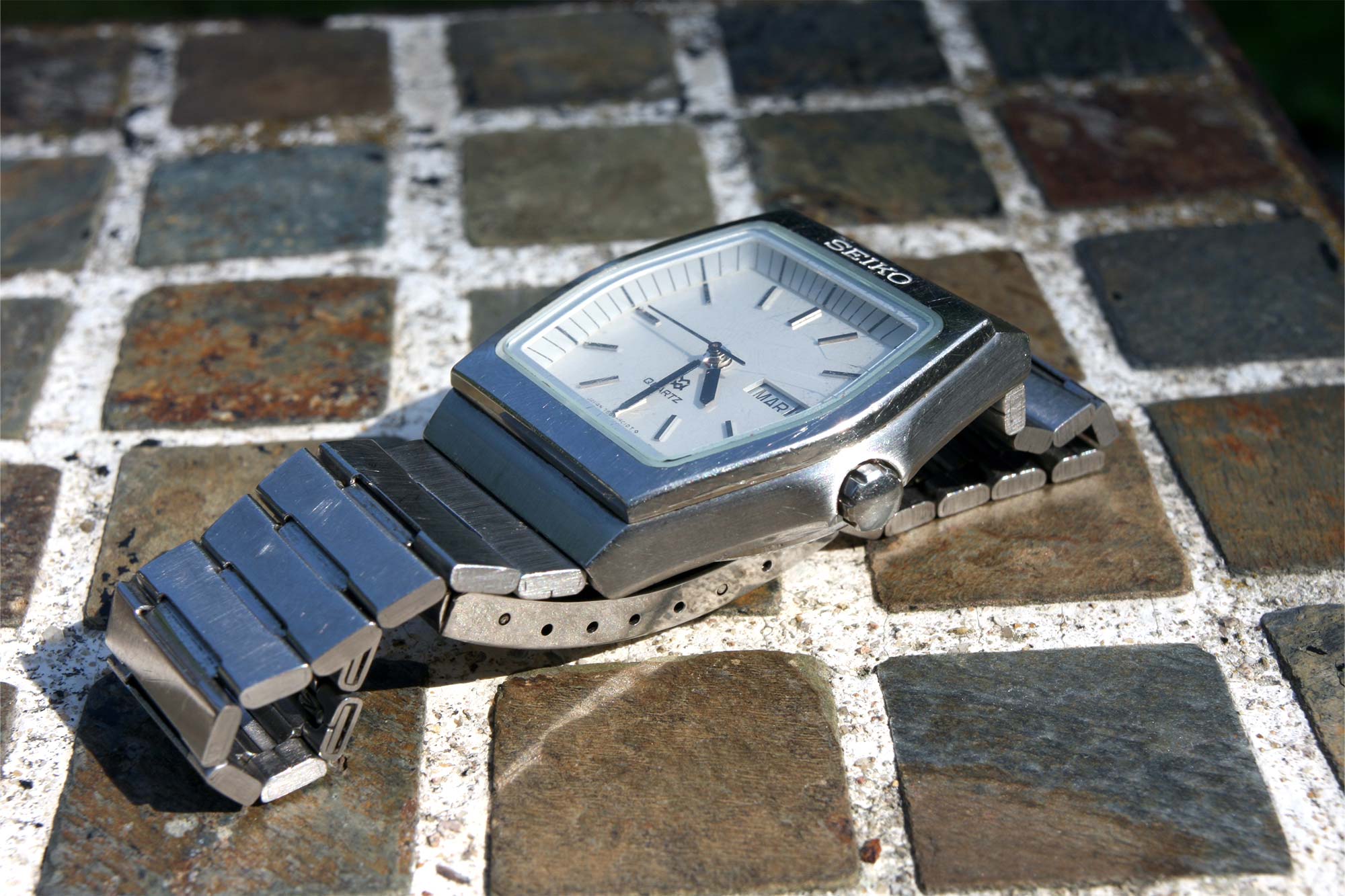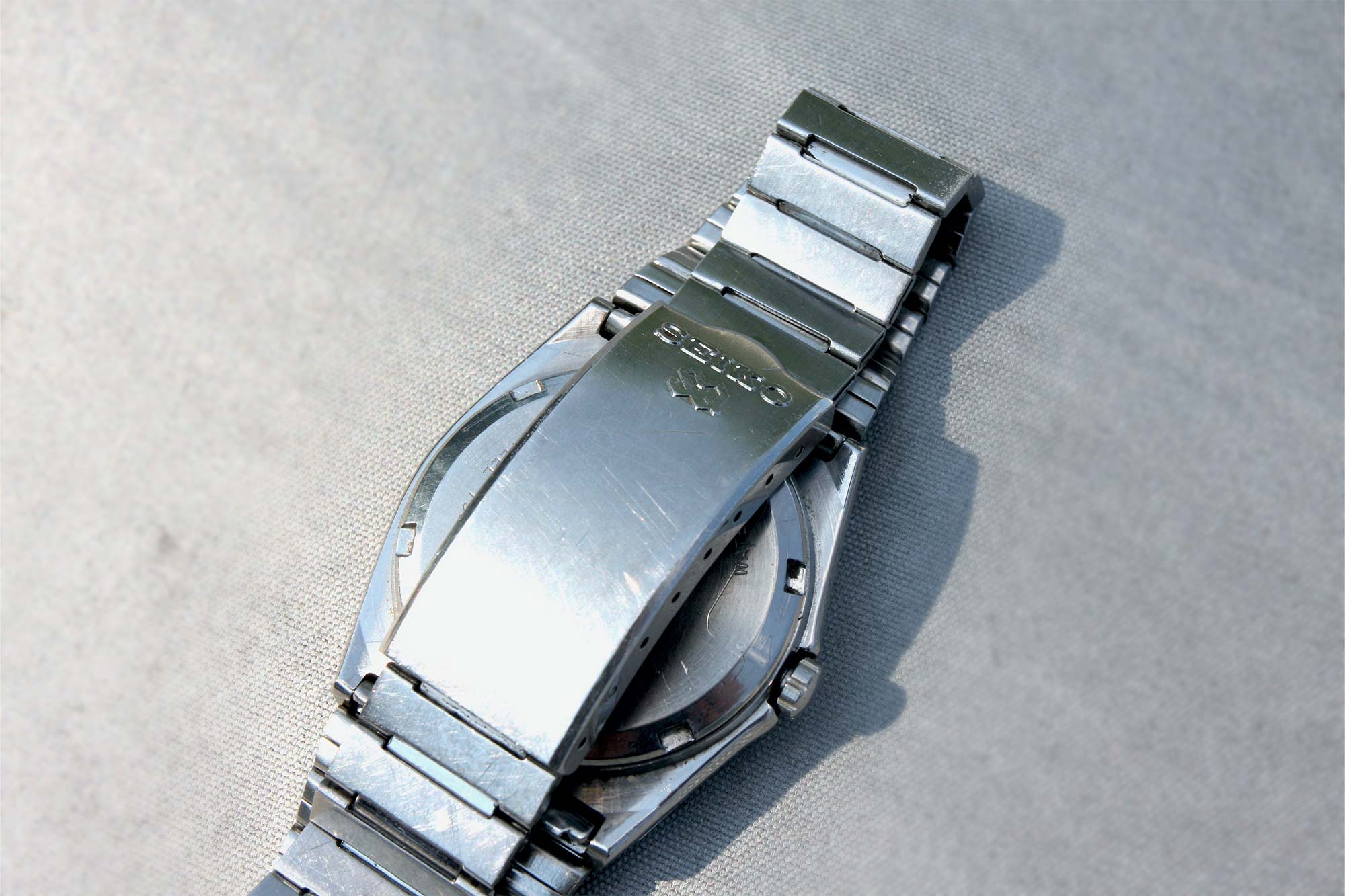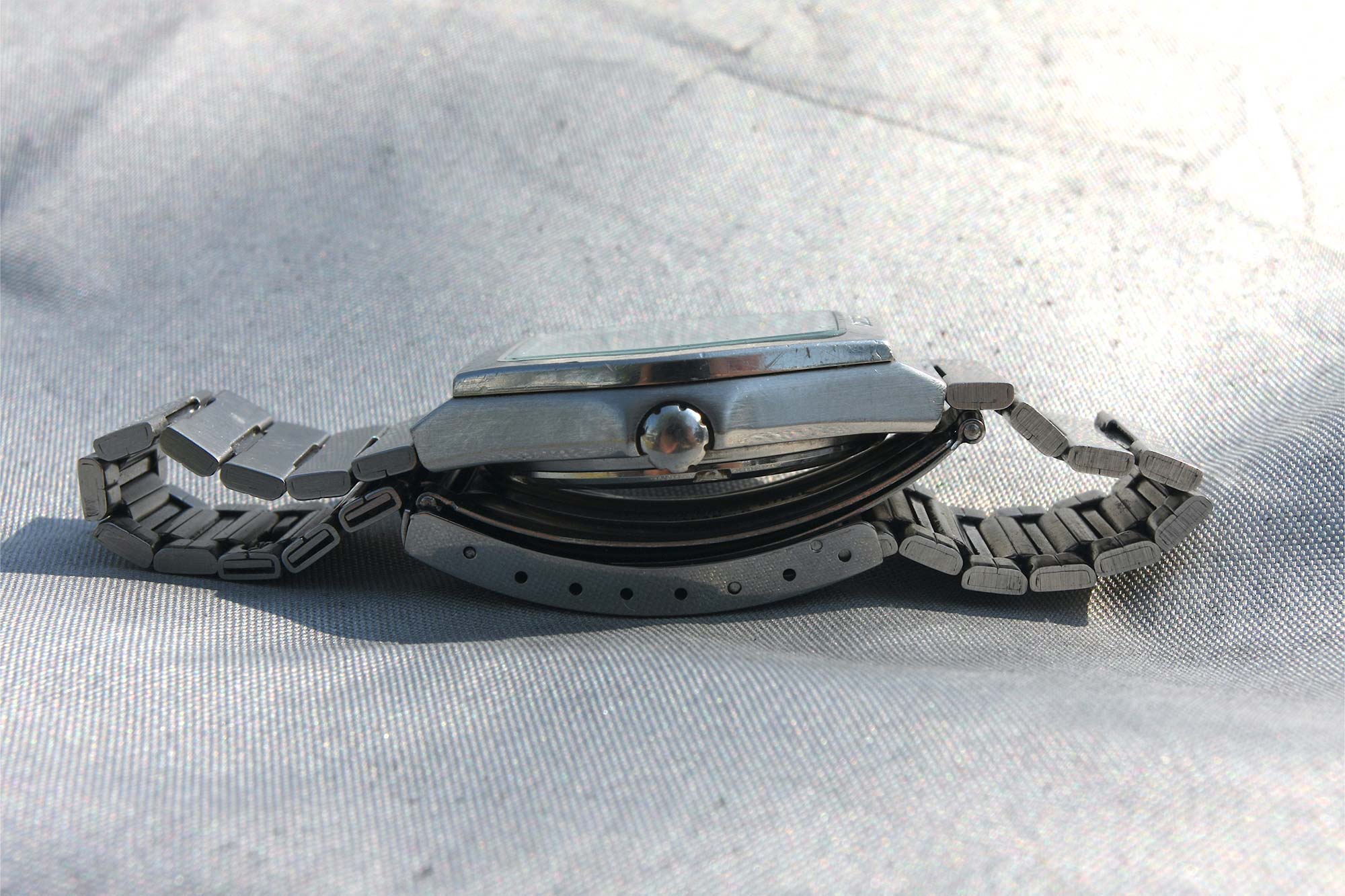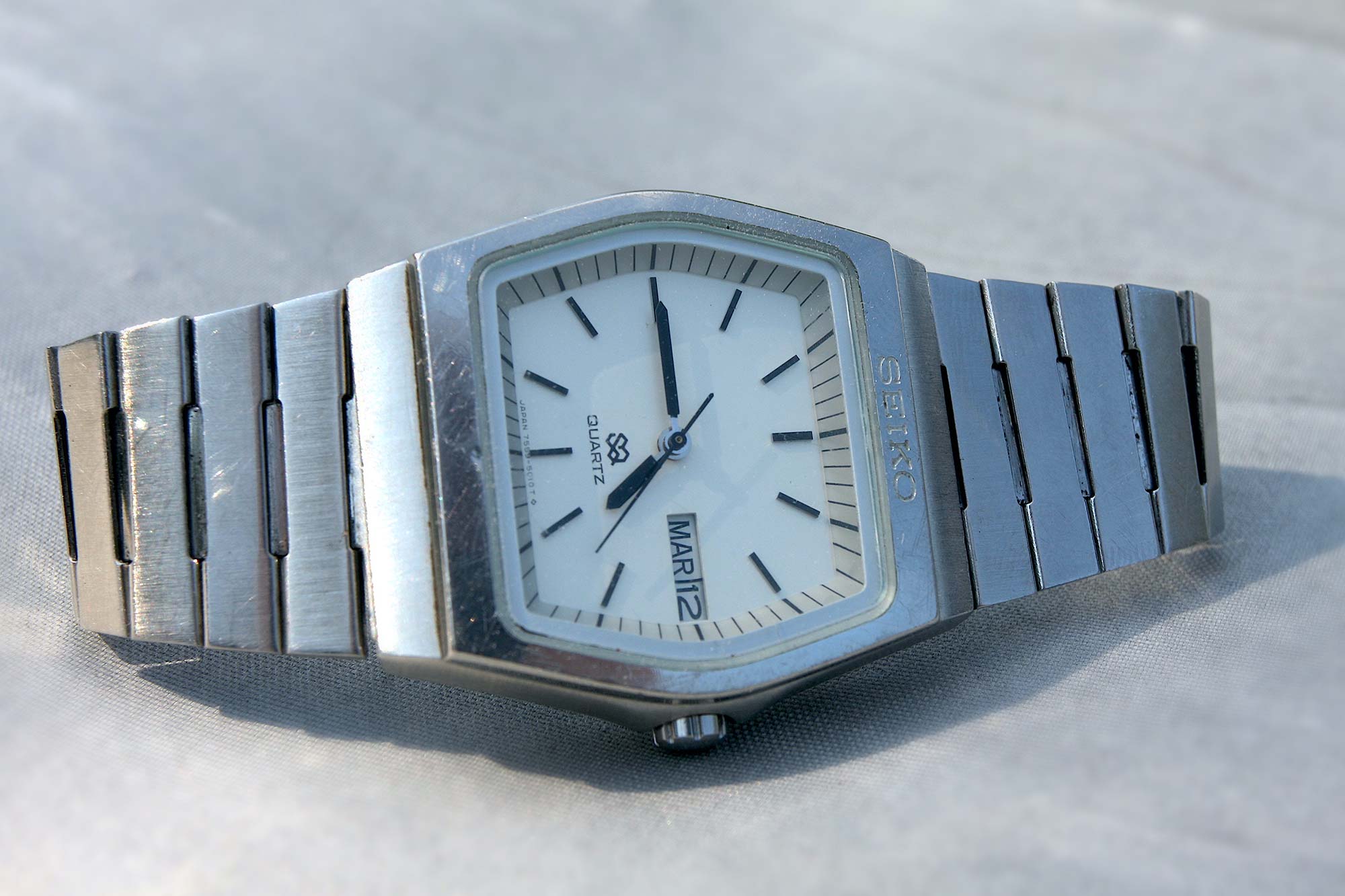In this hobby of ours, there constantly exists the urge to dive down new rabbit holes and subgenres of watch collecting, awaiting the next reason for us to open our wallets and find a reason to justify purchasing another piece. While this typically takes the form of a unique color combination or bezel insert, what about a function like backlights? Sure, Timex’s Indiglo has most certainly found mainstay within the watch industry––as has Casio’s Electro Luminesce technology and of course lume––but what others are out there? For those who haven’t had the pleasure, I now have the honor of introducing you to the fairly forgotten Seiko 7559 movement, utilized here in its most unique application: the 5010 model.
A Brief History of the Cal. 7559 and its Applications
As is the story with most watches I tend to develop an interest in, little is known about the design process behind this movement or model outside of repair manuals, blog posts, and owner photographs. The information included here is based on my own research, and I invite anyone interested in this model or movement to include any additional material they may know in the comments section below. Though I’ve attempted to collect as much information on the subject as possible, I would be delighted to hear that more pictures or materials of any kind exist elsewhere.
Production of the cal. 7559 began somewhere in the summer months of 1978 and continued until the late 1980s. The quartz movement itself is a rather typical 4-jewel, 3-hander with a day-date complication. There appears to have been Kanji, Spanish, Arabic, and possibly Roman Numeral bilingual day wheels featured on the 7559 throughout its lifespan. When the crown is depressed, the movement’s ace-up-the-sleeve party trick makes itself known. A small amber light illuminates the chapter ring from the top of the dial and provides decent visibility in low-light conditions. While the 5010 has quite the unique case shape and overall design, Seiko produced numerous other models powered by the cal. 7559 in more typical 70s and 80s Seiko quartz case shapes. These other models include the 6010, 8000, 600H, 6009, 6000, and 5000 series; I invite you, if at all interested in these light-packed movements, to research each of these models. Noticeable differences found in these models are variations to case shape and finish, dial color, dial text, bracelet options, and more.
The history of the 5010 model is even more elusive than its movement. Unable to find its inclusion in any late 1970s or early 80s catalogs or advertisements, I took to auction sites, blogs, and forums in search of production dates. I found, having reviewed over 20 examples online, that 95% of them were dated to January 1980 with the remaining 5% having November and December 1979 serial numbers. While I would assume Seiko produced this watch for longer than a three-month span, the data I gathered currently indicates otherwise.
The 5010’s Design and Variations
It’s impossible to begin this section without first appreciating the 5010’s case and bezel design. While its hexagonal shape is incredibly unique even by today’s standards, Seiko had used a similar design for several models throughout the 1970s––its most similar predecessors being numerous models in the 6309 Seiko 5 family. On a side note, for those more accustomed to the luxury vintage space, this case shape should be familiar to fans of IWC’s Da Vinci series. While the case and its mixture of polished and brushed finishing is the initial eye-catching aspect of the 5010’s design, the dial’s lack of any Seiko branding is what drives this watch home for me. Opting for an engraved Seiko logo on the bezel’s top edge, the dial’s empty upper portion provides more room for the movement’s light to reflect off. Could this technically be Seiko’s first quasi-sterile dial watch?
Measuring 36mm across and 40mm lug-to-lug, the 5010 offers just the right amount of wrist presence without being too obtrusive––its hidden lugs help keep its sizing in check. The crown is also a pleasant, chunkier size to provide enough room for easy adjustment (and illumination, of course). Another showstopping design queue of the 5010 is its bracelet. The lugs, coming in at 22mm, are a bit unusual for a non-diver watch, but because of the case’s design, it makes perfect sense why they’re this substantial. With a dramatic taper down to 18mm at the clasp, the bracelet does a remarkable job of reducing an otherwise bulky lug width.
According to my research, there exists only two, rather questionable variations of the 5010 model. An eBay seller recently listed an example with a Royal Saudi Armored Corps Military dial. However, the bracelet is heavily polished, the listing has several errors within its description––stating its case width is 30mm, it utilizes a cal. 7550 movement, and it includes a Tissot bracelet just to name a few––so I cannot confirm if the 5010 model was ever used in any Saudi military branch. The other variation, sold at auction several years ago, is gold plated with a brown dial. Besides this singular listing, I was unable to find another example, again leading me to question the watch’s authenticity.
Market Availability and Buyer’s Guide
Can’t get enough of the hexagonal case shape, eh? Or maybe it was the sterile dial or novel light function, any of which are valid selling points of the 5010. The good news is that these models do exist throughout the vintage market if you look hard enough or wait long enough. Typically, 5010s are listed and sell for anywhere between $50-$150 depending on condition and the inclusion or absence of the bracelet. Though I was fortunately gifted this watch from a good watch friend I met through Instagram (thanks again, Matt @dad.watch!), the 5010 generally stays within most any collector’s budget.
As is the case with all watches, there are some notable factors to keep in mind before adding one of these to your cart. From a cosmetic standpoint, I have seen numerous examples of 5010s with heavily-patinated dials that feature dark tan, brown, and black splotches or overall tint to the originally white dial. Additionally, I find the bracelet to be a key selling point to this watch, and while examples of the 5010 can be found, separate bracelets for the model are few and far in between. If the dial patina is bothersome to you and the lack of a bracelet is a deterrent, keep your eyes peeled for better condition pieces on the market.
If you come across a 5010 being sold for parts or repair, the good news is that parts do emerge occasionally and are typically listed for under $100. Thankfully, the original Seiko 7559A parts guide is accessible online and includes part numbers and basic repair techniques for the movement. It’s not often that a relatively niche movement still has official documentation circulating online, so I recommend you check it out if at all interested.
Final Thoughts
While there will always be staple models of the Seiko catalog that collectors save their pennies and dimes to attain one day (yes, I’m personally looking at you Monopusher), affordable pieces like the 7559-5010 are worthy of attention as well. There tends to be an unnecessary synopsizing of “rare” with “luxury”––which then leads to the assumption of high prices––throughout the collecting community, not realizing that uncommon and unusual watches from well-known brands like Seiko can cost less than a new pair of shoes. The brand’s 1970s and 80s eras contain stunning and unique watches like the 5010 that, with such a unique profile, will catch any fellow collector’s eye.
Case shape aside, there’s also something rather charming about the inclusion of the watch’s backlight capabilities. What may seem today like a rather archaic function is actually an incredibly useful tool that represents a once exciting new development for Seiko and the watchmaking industry itself. Whether it’s the hexagonal case, semi-sterile dial, logo-engraved bezel, heavily tapered 22mm bracelet, or backlight, keep your eyes peeled (and watch box emptied) to add a 5010 to your collection. It’s always important to remember: to obtain a piece of horological history doesn’t always mean having to obtain a second mortgage.









 Featured Videos
Featured Videos




